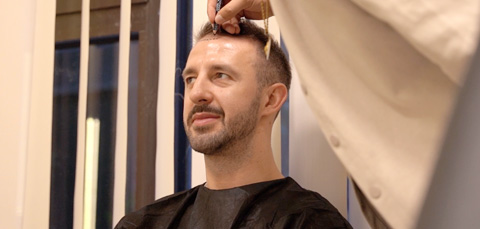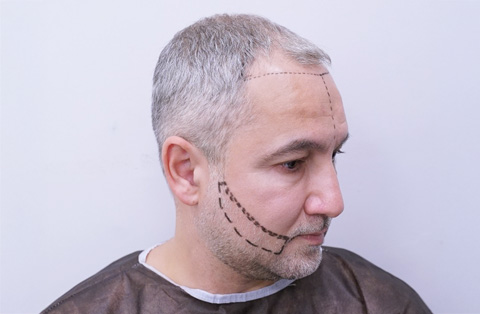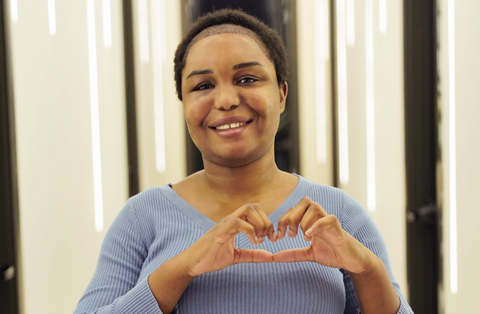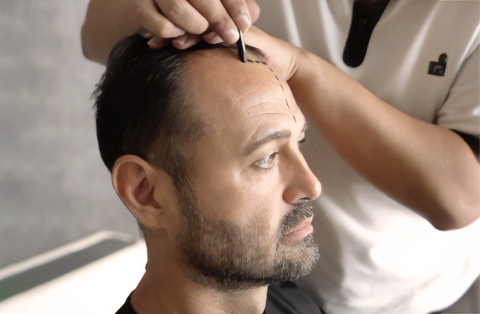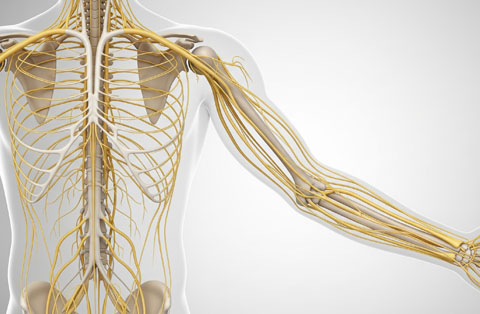For those looking to combat hair loss, hair transplant surgeries have emerged as a groundbreaking solution. As a procedure that’s been around for decades, questions arise about its long-term sustainability, especially what to expect from a hair transplant after 10 years.
Let’s dive deep into this topic and shed some light on those long-term results and considerations.
What is a Hair Transplant?
Hair transplantation is a surgical procedure where hair follicles are harvested from a donor area (typically the back or sides of the scalp) and implanted into thinning or balding regions.
Hair Transplant Techniques
Exploring the world of hair restoration? Discover all hair transplantation techniques to find the best solution for hair loss. From traditional methods to cutting-edge procedures, each technique offers unique benefits tailored to individual needs and goals.
- FUT (Follicular Unit Transplantation): Also known as strip harvesting, a strip of the scalp is removed, and individual hair follicles are extracted and implanted.
- FUE (Follicular Unit Extraction): Individual follicular units are extracted and implanted, avoiding a linear scar.
- Sapphire FUE Hair Transplant: Sapphire FUE uses sapphire blades for precise, minimally invasive hair transplants.
- DHI (Direct Hair Implantation): A more advanced form of FUE where hair follicles are implanted directly without prior holes being made.
- Robotic Hair Transplant: Utilizes robotic technology for precision in extracting and implanting hair follicles.
Hair Transplant Success Rates
With advancements in technology, the success rate of hair transplants has increased to above 90%, meaning a significant majority of the transplanted hairs will grow successfully.
How Does Hair Regrow After a Transplantation Surgery?
Understanding how hair regrows after a transplantation procedure requires a glimpse into both the mechanics of the surgery and the biology of hair growth.
1. The Hair Transplantation Process:
First and foremost, it’s crucial to understand what happens during the hair transplantation surgery:
- Hair Follicle Extraction: The process begins by harvesting healthy hair follicles, typically from the back or sides of the scalp. This area is known as the ‘donor site’.
- Site Preparation: Small incisions are made at the target area, known as the ‘recipient site’, where hair growth is desired.
- Implantation: The harvested follicles are then meticulously implanted into these incisions.
2. Initial Shedding Phase:
After the transplantation, most of the newly transplanted hairs undergo a shedding phase. This is completely normal and is a part of the natural hair growth cycle. The initial shedding usually occurs within 2 to 6 weeks post-surgery. At this stage, the hair shaft falls off, but the root remains intact and goes into a resting phase.
3. The Dormancy Period:
Once the transplanted hair sheds, the follicles enter a dormancy period that can last anywhere from 2 to 4 months. During this time, little to no hair growth is observed.
4. Active Growth Phase:
After the dormancy period, the transplanted hair follicles start to produce new hair shafts. This growth phase, also known as the anagen phase, can last for several years. The new hairs gradually become thicker and longer over the next 6 to 12 months.
5. Maturity and Continuation of the Hair Growth Cycle:
By the 12th to the 18th month, the results of the hair transplant are typically fully visible. The transplanted hairs will continue to go through the regular phases of the hair growth cycle, including the growth (anagen), transitional (catagen), and resting (telogen) phases.
It’s worth noting that while the transplanted hairs are resistant to the hormone DHT (which causes hair thinning and loss in genetically predisposed individuals), surrounding non-transplanted hair may still be susceptible to thinning. This is why some patients might opt for subsequent procedures to maintain a fuller appearance over time.
Hair regrowth post-transplantation is a process that requires patience. It’s a journey that unfolds over months, not days, but the results—natural-looking, fuller hair—are often well worth the wait.
Scalp Structure

The scalp is made up of layers, and hair follicles are implanted into the dermis, where they establish a blood supply and grow.
Stages of Hair Growth
Hair growth isn’t a continuous process but occurs in specific stages. Understanding these stages is crucial, especially when considering treatments like hair transplantation, to predict and understand how transplanted or natural hair will behave over time. Here’s a detailed explanation of the stages of hair growth:

1. Anagen (Growth Phase):
- Characteristics: Hair grows approximately 1 cm every 28 days during this stage. The actual length of this phase determines the maximum hair length that an individual can achieve.
- Process: Cells in the hair bulb divide rapidly, creating new hair growth. The hair strand grows upward through the follicle, pushing out the older, club hair (a hair that has stopped growing or is no longer in the anagen phase).
2. Catagen (Transitional Phase):
- Duration: This is a brief transitional stage that lasts for about 2 to 3 weeks.
- Characteristics: Growth ceases, and the outer root sheath shrinks and attaches to the hair root, forming a club hair. The hair follicle renews itself during this phase.
- Process: This stage represents a period where the hair structure changes and prepares to enter the telogen phase.
3. Telogen (Resting Phase):
- Duration: This phase endures for approximately 3 months.
- Characteristics: Around 10-15% of all hairs are in this phase at any given time.
- Process: The hair remains anchored in the follicle but does not grow. At the end of this phase, the old hair sheds (often while washing or brushing), and a new hair from the anagen phase starts growing in the follicle, pushing the old hair out.
4. Exogen (Shedding Phase):
- Characteristics: This is a part of the telogen phase and involves the shedding of hairs.
- Process: Old hairs that are shed allow new hairs to come in. On average, a person loses about 50 to 100 hairs each day because of the exogen phase.
It’s worth noting that the duration and actual process can vary based on several factors, including genetics, age, health, and more. For instance, the anagen phase for eyelashes or arm hair is much shorter than that of scalp hair, explaining why these hairs are shorter in length.
In the context of hair transplantation, understanding these phases is crucial. Transplanted hairs typically enter the telogen phase shortly after transplantation and shed, which can sometimes concern patients. However, after this shedding, the hair will re-enter the anagen phase, and the growth of new, strong hair will begin.
What Results Can I Expect from a Hair Transplant after 10 Years?
While individual results may vary, most patients experience substantial hair growth and a more natural-looking hairline. The transplanted hairs are typically resistant to the hormone causing baldness, ensuring longevity.
Are the Results Sustainable 10 Years after Hair Transplant?
Yes, the transplanted hair generally remains, but surrounding non-transplanted hair might continue thinning, potentially impacting the overall density.
What Habits Should I Avoid to Get the Best Results from a Hair Transplant?
Avoiding direct sunlight on the scalp, refraining from smoking, and avoiding excessive alcohol can improve the longevity of your hair transplant results.
Factors Affecting Hair Transplant Longevity
To maximize the success and longevity of a hair transplant, certain habits and practices should be avoided. Proper post-operative care is crucial in the initial stages, but even long after the surgery, certain habits can affect the health and appearance of the transplanted hair. Here are some habits to avoid for the best hair transplant results:
Habits to Avoid After a Hair Transplant:
1. Avoiding Post-Op Instructions:
- Importance: Failing to follow your surgeon’s post-op instructions can lead to complications and poor graft survival.
- Tips: Always adhere to the provided post-operative guidelines, including sleeping positions, wound care, and activity restrictions.
2. Smoking:
- Importance: Smoking restricts blood flow and can hinder the healing process.
- Tips: It’s best to quit smoking or at least significantly reduce your intake both before and after surgery for several weeks.
3. Alcohol Consumption:
- Importance: Alcohol can thin the blood and increase the risk of bleeding and swelling.
- Tips: Avoid consuming alcohol for at least a week before and after the procedure.
4. Direct Sun Exposure:
- Importance: Direct sunlight can harm the scalp’s healing process and may cause discoloration.
- Tips: Wear a hat when going outside, and avoid prolonged sun exposure for the first few months.
5. Strenuous Activities:
- Importance: Rigorous activities can increase blood pressure and risk of swelling or bleeding.
- Tips: Avoid heavy exercises and lifting for at least 2-4 weeks post-surgery.
6. Scratching or Picking:
• Importance: Picking at scabs or scratching the scalp can dislodge grafts or cause infection.
• Tips: If itchiness occurs, consult your surgeon for a suitable solution rather than scratching.
7. Applying Chemical Products:
- Importance: Chemical products, including certain hair dyes and treatments, can irritate the scalp and affect graft survival.
- Tips: Wait until your surgeon gives the go-ahead, usually several months post-operation, before applying any chemical treatments.
8. Poor Diet:
- Importance: A balanced diet promotes overall health and better healing.
- Tips: Consume a diet rich in protein, iron, vitamins, and minerals to support hair health.
9. Neglecting Scalp Care:
- Importance: Proper scalp care ensures the health and longevity of both the existing and transplanted hair.
- Tips: Use mild shampoos, avoid very hot water, and consider regular scalp massages to promote blood flow.
While the aforementioned habits are general guidelines, individual instructions may vary based on the specifics of the surgery and the surgeon’s recommendations.
Always prioritize direct instructions from your medical professional and maintain regular follow-ups to ensure the best results from your hair transplant.
Hair Transplant Results After 10 Years
By the 10-year mark, transplanted hairs remain while some surrounding non-transplanted hairs might thin, potentially affecting overall look and density.
Does Transplanted Hair Turn Grey?
Yes, transplanted hair can turn grey as it’s subject to the natural aging process, just like the rest of your hair.
The graying of hair is a natural part of the aging process, though it can also occur prematurely in some individuals. Here’s a detailed breakdown of why our hair turns grey over time:
1. Melanin Production Decreases:
Hair gets its natural color from pigments produced by cells called melanocytes. These cells produce a pigment called melanin, which gives hair its color.
As we age, the production of melanin decreases, leading to a reduction in pigment in the hair. When the hair has a reduced amount of melanin, it appears grey. When there’s no melanin at all, the hair appears white.
2. Genetics:
The age at which your hair starts turning grey is largely determined by genetics. If your parents or grandparents started graying early, there’s a good chance you might too.
3. Hormonal Changes:
Hormonal imbalances or shifts, especially during stages like puberty, pregnancy, and menopause, can influence when and how rapidly our hair turns grey.
4. Oxidative Stress:
Our body produces free radicals, which can damage cells, including melanocytes. A balance is maintained with the help of antioxidants, which neutralize these free radicals. An imbalance, due to factors like an unhealthy diet, stress, or exposure to pollutants, can accelerate cell damage, including the damage to melanocytes, leading to premature greying.
5. Medical Conditions:
Some medical conditions, such as vitiligo, thyroid disorders, and vitamin B12 deficiency, can cause hair to turn grey.
6. Lifestyle Factors:
Smoking, poor diet, and high levels of stress can also contribute to premature graying.
7. Environmental Factors:
Continuous exposure to UV rays, pollutants, and certain chemicals can reduce melanin production, leading to the graying of hair.
8. Natural Build-up of Hydrogen Peroxide:
As we age, our hair follicles produce a greater amount of hydrogen peroxide, a natural bleaching agent, which can bleach the hair from the inside out. The body usually produces enzymes that break down hydrogen peroxide, but as we age, this production can decrease, leading to an accumulation that effectively “bleaches” the hair.
It’s important to note that while the graying of hair is a natural process and often inevitable, the rate and onset can vary greatly from person to person based on the factors listed above.
Are There Any Long-term Side Effects of Hair Transplantation?
Hair transplantation is a surgical procedure used to address hair loss. While it has been perfected over decades and is generally considered safe when performed by qualified professionals, there can still be potential long-term side effects to consider.
Here are some potential long-term complications and side effects of hair transplantation:
1. Scarring:
Depending on the technique used, scars may be left behind. For instance, the strip harvesting method, also known as Follicular Unit Transplantation (FUT), may leave a linear scar on the donor area.
Follicular Unit Extraction (FUE), a method where individual hair follicles are extracted, can cause tiny dot scars. Although less noticeable, they might still be visible if the hair is shaved very short.
2. Unnatural Appearance:
If the procedure isn’t performed skillfully, the transplanted hair may look unnatural. This can be due to the incorrect angle of the transplanted hairs or an unsuitable hairline design.
3. Loss of Transplanted Hair:
Shock loss is a phenomenon where transplanted hair falls out shortly after the procedure. While this is typically temporary, with hair growth resuming in a few months, in rare cases, some transplanted hair may not grow back.
4. Reduced Sensation:
After the procedure, the area where the hair has been transplanted may feel numb. This is generally temporary, but in some cases, there can be a long-term reduction in scalp sensitivity.
5. Cysts:
Sometimes, hair follicles can become damaged during the procedure, leading to the formation of cysts. While they usually resolve on their own, larger cysts may need medical intervention.
6. Infections:
Although rare, the surgical area can become infected. This risk can be minimized by following post-operative care instructions and using prescribed antibiotics.
7. Continued Hair Loss:
Transplanted hair is generally taken from areas resistant to the hormone DHT, which causes male pattern baldness. However, surrounding native hair can still thin and fall out, which might affect the overall appearance over time.
8. Hair Texture Changes:
In some cases, the texture of the transplanted hair can change, becoming curlier or different from the original hair.
9. Chronic Pain:
Very rarely, individuals may experience chronic pain in the donor or recipient area. This is often due to nerve damage or complications from the procedure.
10. Grafts Not Taking:
Not all the grafts may take root and grow. This means that some areas may have less density than expected, requiring additional sessions.
11. Skin Pigmentation Changes:
The transplanted area may exhibit changes in skin color, either getting darker (hyperpigmentation) or lighter (hypopigmentation).
It’s crucial to understand that while there are potential side effects, choosing an experienced and reputable hair transplant surgeon can significantly reduce these risks. Proper post-operative care and following the surgeon’s guidelines can further ensure successful results with minimal complications.
Will I Need a Second Hair Transplant After 10 Years?
Some individuals opt for a second procedure to maintain density or cover areas that have thinned over time.
Conclusion
A decade post-hair transplant, results stand testament to the efficacy and sustainability of the procedure. With advances in technique and a deeper understanding of hair growth, the outcomes are better than ever.
Ready to embark on your hair restoration journey? Connect with us at Care in Turkey to make your dream a reality!
